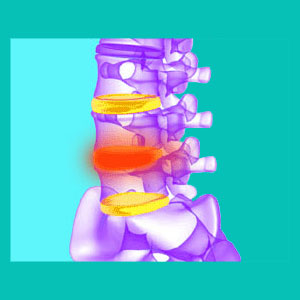
Bulging disc therapy can be conservative, moderate or surgical in nature. It is important to learn about the best forms of therapy for bulging discs before making a choice on the ideal treatment. Failure to do so can lead many patients towards therapeutic failure, unnecessary surgery and even chronic pain.
Before we even begin this conversation about bulging disc treatment, it is vital to remember that the vast majority of herniated discs are not in need of professional medical care. Although back pain may be present, the pain is likely to be coincidental in many cases or transient if actually linked to the disc abnormality. Herniated discs are rarely the cause of chronic back or neck pain. However, when the disc has been judged to be the objective cause of misery, then therapy is surely warranted.
This investigation focuses on the most effective forms of bulging disc therapy for intervertebral structures that have been deemed to be definitively pathological.
Conservative and Moderate Bulging Disc Therapy
Virtually all conservative therapies for bulging discs provide limited benefits, since almost all can be considered symptomatic treatment. This means that the therapy might enact some degree of pain relief, but will do nothing to work on the underlying source of the symptoms: the disc itself. Symptomatic care comes in a staggeringly wide range of options, with some of the most popular being chiropractic, massage, TENS, acupuncture and physical therapy, among many others.
We are not aware of any truly conservative approaches to bulging disc therapy except for spinal decompression, which is generally considered a moderate therapeutic option due to both its high cost, as well as its extended timeline of care. However, spinal decompression is truly nonsurgical and might provide a complete cure for some types of bulging disc pathology where neurological compression is the mechanism of action creating pain.
Likewise, for bulging discs with annular tears thought to be creating pain by the process of chemical radiculitis, flushing injections can also be considered moderate care practices due to them being minimally invasive, rather than truly surgical. Just remember that chemical radiculitis remains a controversial diagnosis in most instances and might lead the patient to seek inappropriate treatment in the form of multiple rounds of unnecessary injections if the verdict turns out to be mistaken, as it often does.
Bulging Disc Surgical Therapy
Bulging disc surgery can also be broken down into more and less invasive techniques which might be available to treat a full range of diagnosed disc conditions. IDET and nucleoplasty are usually ideal curative interventions for intact discs that are creating spinal or neuroforaminal stenosis and nerve tissue compression. Discectomy is a more invasive option for treatment and is more popular, despite being less successful and more risky.
Alternately, some patients will undergo disc removal and spinal fusion to restore stability to the spine. This is perhaps the most extreme surgical solution to common intervertebral bulging, but is utilized in a surprisingly high percentage of common disc bulge profiles. Instead of disc removal and fusion, the patient may be offered artificial disc replacement in a small minority of cases, since this procedure is less common and only offered by select physicians. Although disc replacement spares the patient the damning consequences of fusion, it does subject them to the potential for other complications, such as relatively common hardware failure.
Recommended Bulging Disc Therapy Options
We tend to stress the extreme importance of making absolutely sure that the disc is the true cause of pain, rather than focusing on immediate treatment. In most cases, bulging discs are coincidental to pain and not the source of suffering. This fact remains unknown to most people who are diagnosed with bulging discs in their spine, so our work of educating the public continues…
In cases where a verified pathological disc does exist, we tend to recommend curative care, rather than conservative, since there is a more enlightened objective of ending symptoms permanently. However, the patient should always choose the least invasive type of care that can provide this cure. In many cases, spinal decompression will be considered optimal, since it is nonsurgical and effective for intact bulging discs. If surgery is indicated, patients are advised to utilize IDET and nucleoplasty rather than discectomy, when indicated, as well as to avoid spinal fusion unless it is truly a matter of life or death and a last therapeutic option available.





